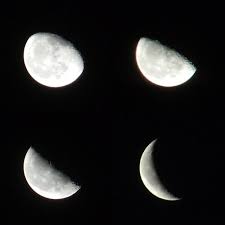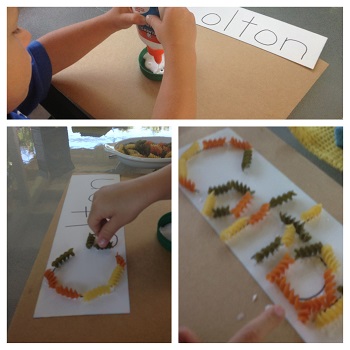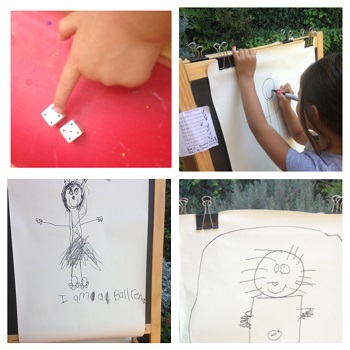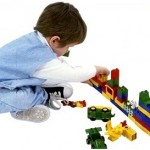Our closest neighbor in space is the moon and we can observe it almost every night—just by looking up into the sky. Whether is it a school assignment or a nightly family activity to wind down, the study of the moon is an easy, engaging way to introduce students—young and older— to space exploration. Let the questions begin!
Try keeping a Moon Log for a month.
- Print out a copy of the Moon Log.
- Set a time each night to look at the moon and discuss its shape. Go outside if you can.
- Record the part of the Earth-facing hemisphere of the moon that is visible each night.
- Determine what phase of the moon you observed.
- Encourage your child/student to use appropriate vocabulary.
The words and phrases listed below should get your started:
crescent—a sliver
gibbous—having a hump shape
visible—can be seen
waning— shrinking
waxing—growing
*Keep in mind, waxing and waning moons can have the same shape but one is growing and one is shrinking.
5 Different Phases Seen from Earth
new moon—none of the Earth-facing hemisphere of the moon is visible
crescent moon—less than half of the Earth-facing hemisphere of the moon is visible
quarter moon—exactly half of the Earth-facing hemisphere of the moon is visible
gibbous moon—more than half of the Earth-facing hemisphere of the moon is visible
full moon—all of the Earth-facing hemisphere of the moon is visible
Want to make your Moon Log activity a STEM experience? Consider trying some of these ideas throughout your month-long observation.
Science
- Read books to learn more about the moon.
- Find out what the moon is made of and how it moves.
- Learn more about the moon’s location in relation to Earth and the sun.
- Find out if the following statement is true or false. “The moon is a rock reflecting the sun.”
- Demonstrate the moon’s orbit using three different sized balls to represent the sun, moon, and Earth.
Technology
- Check out the phases of the moon each night and double-check what you saw online—or vice versa. Simply type in phases of the moon, the month, and the year (ex. phases of the moon May 2016), and you will find pictures of the actual sequence.
- Research the Apollo space program.
- Find pictures or video of the lunar landing of the Eagle in 1969 and listen to astronaut Neil Armstrong’s famous words.
Engineering
- Build a model to represent the sun, moon, and Earth. Use it to demonstrate how/when we see the moon.
- See if you can see the moon more clearly using a telescope. Find out what other tools or instruments are used to observe the moon.
- Design a spacecraft to travel to the moon. Use recycled materials to build it.
Math
- Start a list of number facts about the moon. See how many you can collect. Here are a few questions to get you started:
-
- How many days does it take the moon to complete a cycle?
- How long is a day on the moon?
- How much longer is a day on the moon than a day on Earth?
- Discuss the size and shape of the moon and how it compares to Earth and the sun.
TCR Materials
#TCR2925—Differentiated Science Lessons, pages 96-97 5th grade
#TCR3972—Daily Warm-Ups: Science, page 161 5th grade
#TCR3973—Daily Warm-Ups: Science, pages 124-128 6th grade




